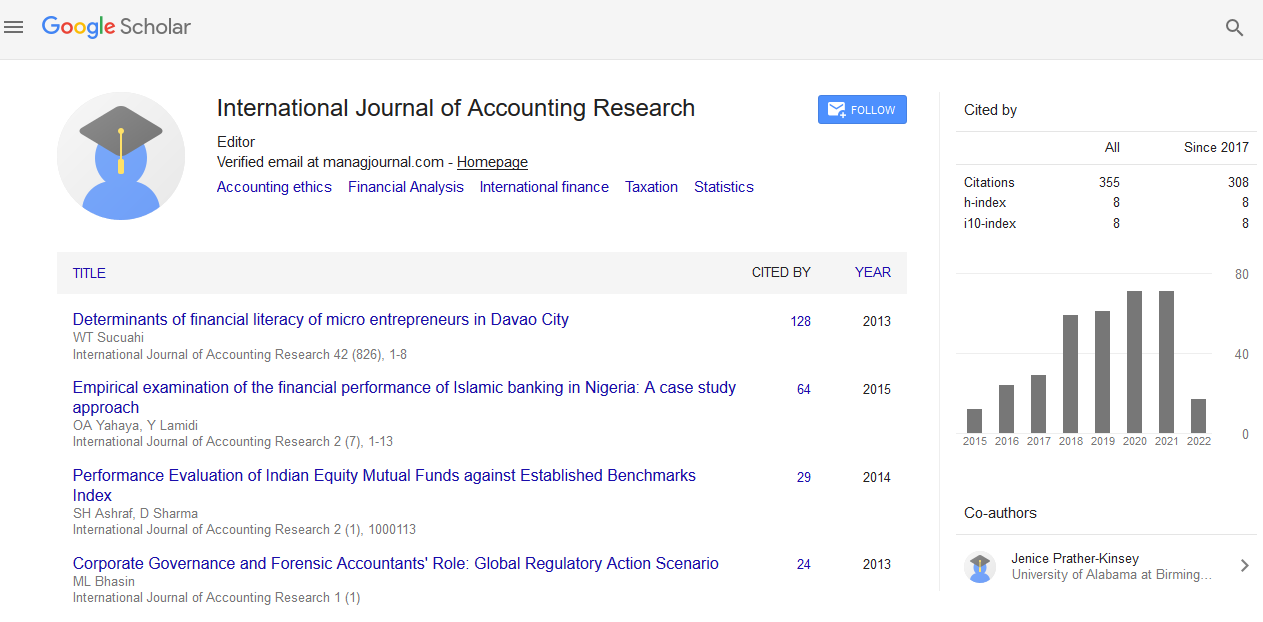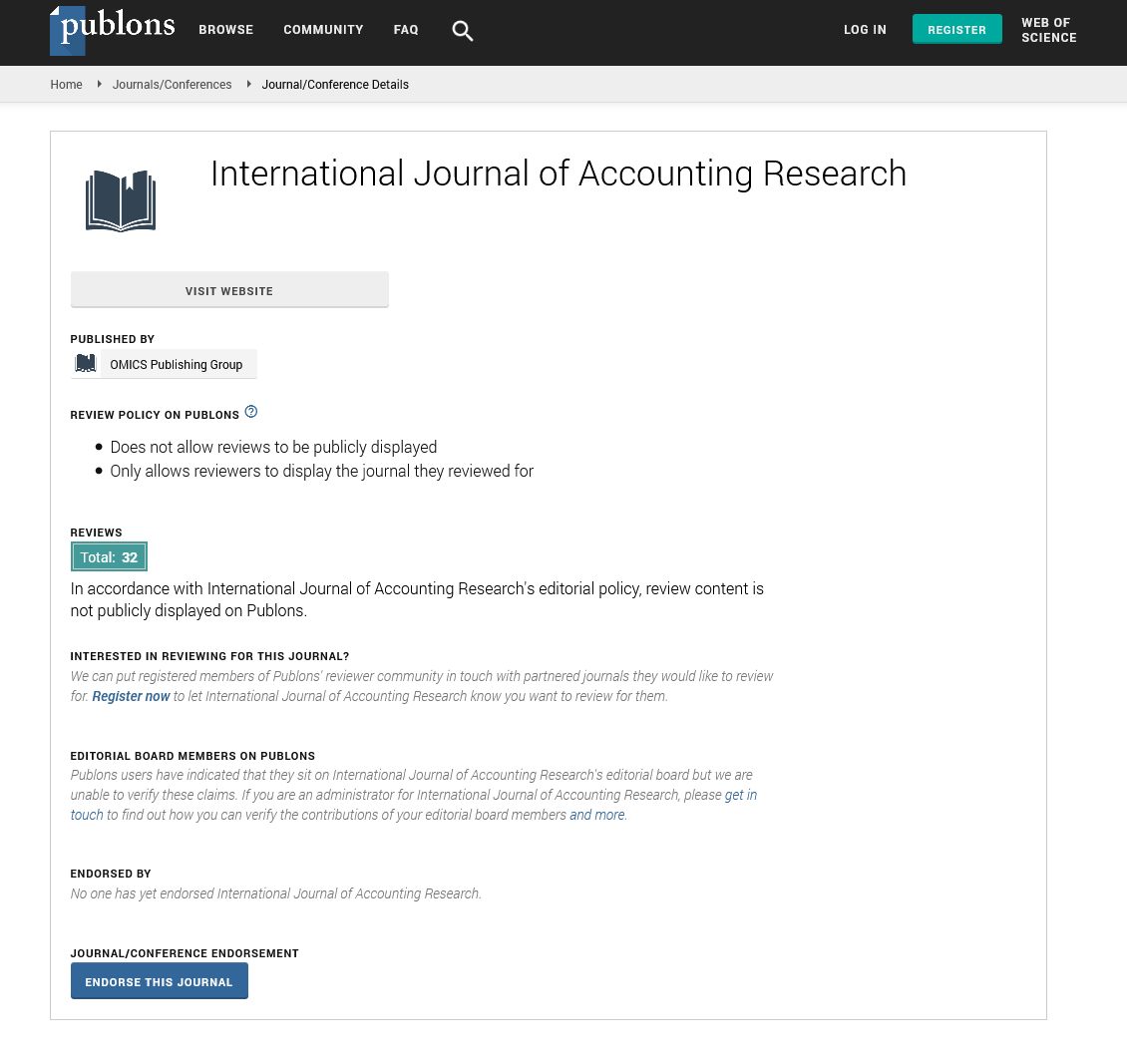Indexed In
- Open J Gate
- RefSeek
- Hamdard University
- EBSCO A-Z
- Scholarsteer
- Publons
- Euro Pub
- Google Scholar
Useful Links
Share This Page
Journal Flyer

Open Access Journals
- Agri and Aquaculture
- Biochemistry
- Bioinformatics & Systems Biology
- Business & Management
- Chemistry
- Clinical Sciences
- Engineering
- Food & Nutrition
- General Science
- Genetics & Molecular Biology
- Immunology & Microbiology
- Medical Sciences
- Neuroscience & Psychology
- Nursing & Health Care
- Pharmaceutical Sciences
Perspective - (2022) Volume 10, Issue 2
Short Note on Cost Effectiveness
Todd Honore*Received: 01-Feb-2022, Manuscript No. IJAR-22-15964; Editor assigned: 03-Feb-2022, Pre QC No. IJAR-22-15964 (PQ); Reviewed: 17-Feb-2022, QC No. IJAR-22-15964; Revised: 21-Feb-2022, Manuscript No. IJAR-22-15964 (R); Published: 28-Feb-2022, DOI: 10.35248/2472-114X.22.10.264
Description
Cost-Effectiveness Analysis (CEA) is a form of economic analysis that compares the relative costs and outcomes (effects) of different behavioural policies. Cost-benefit analysis is different from cost-benefit analysis, which assigns monetary value to a measure of impact. Cost-effectiveness analysis is commonly used in the area of medical services where it may be inappropriate to monetize health effects. CEA is usually expressed as a ratio where the denominator is health promotion from the metric (lifespan, prevention of preterm birth, years of vision obtained) and the numerator is the cost associated with health promotion. The most commonly used measure of results is quality-adjusted life years.
Cost-utility analysis is similar to cost-benefit analysis. Economic analysis is often visualized on a plane consisting of four quadrants, showing cost on one axis and effectiveness on the other. Cost-effectiveness analysis focuses on maximizing the average level of results. Decentralized cost-effectiveness analysis extends CEA's core approach to include concerns about the distribution of results, average levels, and trade-offs between fairness and efficiency. These more sophisticated methods are of particular interest when analyzing interventions to address health inequality.
The concept of cost effectiveness applies to the planning and management of many types of organized activities. It is widely used in many areas of life. For example, when buying a military tank, competing designs are compared not only by purchase price, but also by factors such as action radius, speed limit, rate of fire, armor protection, gun caliber and armor penetration. If tank performance is comparable or slightly inferior to its competitors in these areas, but significantly cheaper and easier to manufacture, military planners can choose to be cheaper than their competitors.
Conversely, if the price difference is close to zero, but more expensive competitors can offer great advantages on the battlefield through special ammunition, radar fire control, and laser rangefinders, and accurately destroy enemy tanks at extreme distances. However, military planners can choose for itaccording to the same economic principles.
In the context of pharmacoeconomics, the cost-effectiveness of a therapeutic or prophylactic intervention is the ratio of the cost of the intervention to the relevant measure of its effectiveness. Cost refers to the resources spent on intervention and is usually measured in monetary terms such as dollars and pounds. The extent of the impact depends on the intervention being considered. Examples include the number of people who have been cured of the disease, a decrease in mmHg of diastolic blood pressure, and the number of asymptomatic days in a patient. The choice of an appropriate measure of efficacy should be based on the clinical judgment associated with the intervention under consideration.
A special case of CEA is cost-benefit analysis. It uses measurements such as quality-adjusted life years and disability adjusted life years to measure the impact on health over the years. Cost-effectiveness is usually expressed as an Incremental Cost-Benefit Ratio (ICER). This is the ratio of change in cost to change in impact. A complete compilation of the cost-benefit analysis of peer-reviewed medical and public health literature is available on the Cost-Effectiveness Analysis Registry website.
A 1995 study of the cost-effectiveness of more than 500 lifesaving interventions tested found that the median costeffectiveness was $ 42,000 per year saved. According to a systematic review in 2006, industry-sponsored studies often complete at a cost-benefit ratio of less than $ 20,000 per QALY, with poor quality studies and studies conducted outside the US and EU. Found that is unlikely to fall below this threshold. The two conclusions in this article may indicate that industry-funded ICER measurements are of lower methodological quality than those published by non-industry sources, but retrospectively or otherwise. Due to the nature of private work, it may also be published. Bias is more likely than existing methodological bias. There may be an incentive for an organization not to develop or publish an analysis that does not demonstrate the value of its product.
Citation: Honore T (2022) Short Note on Cost Effectiveness. Int J Account Res. 10:264.
Copyright: © 2022 Honore T. This is an open access article distributed under the terms of the Creative Commons Attribution License, which permits unrestricted use, distribution, and reproduction in any medium, provided the original author and source are credited.


